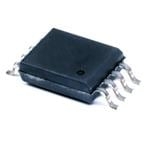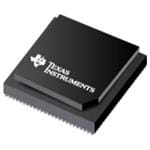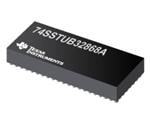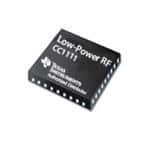The Development Of Integrated Circuits:
The integrated circuits are a microchip that contains all the components needed to run a single electronic device. They act as mini-computer within a larger device like a television or computer monitor.
Today’s ICs are much more sophisticated than the first ones developed in 1958. They can perform many different functions simultaneously, such as processing data from multiple sources or performing mathematical calculations at high speeds and with great accuracy.
For instance, they can generate waveforms for testing purposes and provide power-saving features such as switching off when not needed, etc. Like this EASYIEE integrated circuits ISO1042DWV with high-speed CAN transceiver.

Integrated circuits were made from discrete transistors, resistors, diodes, etc., mounted on a ceramic base called “Bipolar” chips.
These chips were wired together using metal wires or pins to form logic gates such as AND gate, OR gate, etc. However, they were very slow because they had limited speeds due to the thermal limitations of their transistors and other components.
Since then, there have been several generations of integrated circuits:
1st Generation (1958–1969)–Vacuum Tube Technology
In 1959, instead of individual components connected by wires, resistors, and capacitors. Jack Kilby at Texas Instruments Incorporated created an entire circuit on one piece of germanium crystal using transistors. This was called an integrated circuit because it combined so many different functions into one small package that fit on a fingertip.
2nd Generation (1971–1979)–Transistors
The second generation of integrated circuits (ICs) was developed in the late 1960s and early 1970s, using transistors instead of diodes.
The first commercial IC, the Fairchild 3708, was released in 1971. It was an 8-bit digital logic device containing 5700 transistors and became the de facto standard for integrated circuit design for many years thereafter.
3rd Generation (1980–1989)–MOSFETs
The third generation of ICs was introduced in the 1980s and continued to use MOSFETs as switches, but they were designed with a more complex structure that allowed them to operate at higher speeds than previous generations while consuming less power.
These devices were also designed to be used at lower voltages than previous generations, which made them more suitable for battery-powered devices such as calculators and portable computers.
4th Generation (1990–2002 )–Complementary Metal Oxide
Semiconductor (CMOS) is the current state-of-the-art technology for logic design. It uses bipolar transistors in its internal circuitry, which are advantageous for low power consumption and fast switching speeds.
The main disadvantage of CMOS is its high susceptibility to noise, which leads to circuit failure when subjected to electromagnetic interference (EMI).
To overcome this problem, designers have incorporated EMI suppression techniques into their designs. In addition, a complementary circuit design style has been developed.
That exploits the fact that transistors in CMOS logic gates tend to be less susceptible to noise than MOSFETs used in other types of logic gate designs. This has led to an increase in the number of gates per chip and an increase in density per chip area.
5th Generation (2002– Today)–Low Voltage Monolithic Ceramic Chip
Integrated Circuits (LVCMOS) combine CMOS with a robust low-voltage version of MOSFET technology known as “gate-oxide termination” (GTO). LVCMOS is expected to replace CMOS as the dominant technology for integrated circuits by 2010.
Today, integrated circuits are used in virtually every electronic device we use every day. They’re also used in many other industries like medical devices and aerospace technology.
The Operation Of Integrated Circuits:
Integrated circuits contain millions or billions of transistors and resistors arranged in an organized pattern on a single chip called a silicon wafer. The transistors and resistors are connected together by copper wires so that they can perform their function as an integrated circuit.
Integrated circuits have been around since the 1950s, but they have become increasingly useful in our daily lives. They are used in virtually every electronic device we use today. In fact, you might be surprised at just how many different applications they have. Here are some examples of how integrated circuits work in everyday life:
Digital And Analog Signals:
Integrated circuits are designed to either convert analog signals into digital signals or convert digital signals back into analog signals. This allows for data transmission between two devices that might otherwise not be able to communicate with each other like high-performance integrated circuits 66AK2G12ABYA100.

Sensors And Actuators:
Sensors measure a physical property like temperature or pressure while actuators control something like a motor or relay.
Memory:
Integrated circuits like integrated circuits 74SSTUB32868AZRHR Registers allow for the storage of small bits of data like numbers, letters, or images so that they can be accessed at a later time. This is what allows us to save documents on our computers or phones so we don’t lose them when the power goes out.

How To Use The Integrated Circuits?
Integrated circuits can be used in a variety of applications. They are used in computers, cell phones, and other electronic devices. They are also used in medical equipment, such as heart pacemakers and defibrillators.
Integrated circuits can be used to control and monitor the performance of a machine or device. The integrated circuit contains a microprocessor that is able to perform many different functions depending on its programming.
Integrated circuits can be programmed to perform different tasks depending on what you want them to do. For example, if you want the circuit to turn on at a certain time every day, you can program it so that it does this automatically.
What Are The Advantages Of Integrated Circuits?
Integrated circuits are tiny, complex electronic components. They replaced large numbers of discrete transistors with just one or two integrated circuits, which drastically reduced the size and cost of electronic devices.
The integrated circuit has many advantages over other types of electronics:
Size Reduction:
Integrated circuits are much smaller than individual components such as transistors or capacitors that they replace. This makes them cheaper and easier to produce in large quantities. It also allows more space for other components on printed circuit boards.
Cost Reduction:
Integrated circuits are more cost-effective than their discrete counterparts because they’re easier to manufacture in high volumes at a low cost per unit.
Efficiency Improvement:
Integrated circuits operate more efficiently than discrete components because they’re designed specifically for their particular task and don’t require additional circuitry or external connections between components like diodes do.
What’s Inside The Integrated Circuits?
The heart of the integrated circuits is the semiconductor chip, which contains all the components needed for computing or other functions. In older chips, such as those used in PCs and cellphones, the transistors were based on silicon. More recently, these have been replaced by gallium arsenide transistors, which are much faster and more powerful than silicon ones.
Around the transistor is an insulating layer called the gate oxide that protects it from damage when high voltages are applied to it. The insulator also helps prevent current leaking between transistors when they’re not supposed to be connected together.
Another important component is a capacitor — effectively two metal plates separated by an insulator. This stores electrical charge between its two plates until there’s enough energy stored up to allow a current to flow through it.
What Are Some Common Types of Integrated Circuits?
Integrated circuits are found in everything from cell phones to computers to automobiles. They are also used in thousands of other products such as TVs, radios, and stereo equipment. Some of the most common types of integrated circuits include:
Digital logic Integrated Circuits :
These chips contain logic gates that can perform a variety of functions based on binary inputs. Digital logic is used in almost all computer processors as well as other digital systems such as calculators, video games, and other digital devices.
Microcontrollers:
Microcontrollers contain microprocessors that can perform many different tasks by executing machine language instructions one at a time. Microcontrollers like EASYIEE Integrated Circuits CC1111F32RSPR are used in all sorts of electronic applications ranging from simple appliances like washing machines to complex devices like cars and airplanes.

If you want to purchase good integrated circuits, you can choose the company EASYIEE to help. This company is specialized in integrated circuits with rich experience. It has a professional team that provides high-quality products for customers. In addition, its products are used in many fields such as mobile phones, cars, etc., which enables them to be popular with customers all over the world.
Conclusion:
Integrated circuits are the building blocks of electronics. They’re made up of transistors, diodes, and resistors that are etched onto a silicon wafer. When you buy an integrated circuit, you can choose from thousands of different types. These chips have been designed for different purposes and to perform specific functions.
Integrated circuits come in many different flavors depending on their function, power consumption, and how they are built. Some are designed to work with a specific operating system or programming language while others are general-purpose devices that can be programmed to perform a wide range of tasks.





 2022-11-24
2022-11-24 


